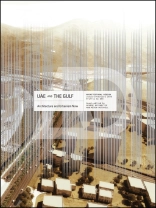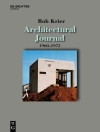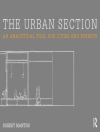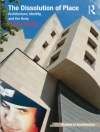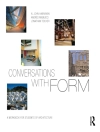At the end of the 20th century, Dubai attracted international
media attention as the world sought to make sense of the
city’s extraordinary growth. Exuberant projects such as the
Burj Arab, the Burj Khalifa and the Palm Islands attracted
investment in dreams to transform the region. While the global
financial crisis kept dreams from becoming reality, this issue of
AD seeks to present a view of architecture and urbanism in
the United Arab Emirates (UAE) and other states in the wider Gulf
Cooperation Council (GCC) at a time when greater economic stability
promises new beginnings. The issue presents examples of
architecture that transcends preoccupation with fabricating images,
and traces the process of making contemporary Gulf cities, from
material tectonics to large-scale masterplans. By presenting the
architecture of UAE and the Gulf within the context of broader
regional developments and global trends, it highlights how projects
in the UAE, Qatar, Kuwait and Saudi Arabia have contributed to
unprecedented urban growth, while emphasising the continuing
environmental challenges of building in the region. In addition to
highlighting various sustainable initiatives intended to counteract
these challenges, the issue also explores how computational design
and new technologies are being innovatively employed to mitigate
the impact of arid climates.
Contributors include: Ameena Ahmadi, Kelly Hutzell, Varkki
Pallathucheril, Todd Reisz, Rami el Samahy, Terri Meyer Boake,
Jeffrey Willis.
International architects: Foster + Partners, Frank Gehry, HOK,
IM Pei, Legoretta + Legoretta, Jean Nouvelle, Reiser + Umemoto,
Allies and Morrison.
Regional architects: AGi (Kuwait), DXB.lab (UAE), X Architects
(UAE).
Jadual kandungan
Editorial 05
Helen Castle
About the Guest Editors 06
George Katodrytis and Kevin Mitchell
Introduction: The Gulf Urbanisation 08
George Katodrytis and Kevin Mitchell
Museum Development in the Gulf: Narrative and Architecture 20
Sarina Wakefield
Cultural Exchange and Urban Appropriation: Space for Art in Sharjah’s Historical Centre 26
Mona El Mousfy and Sharmeen Syed
Design for the Future: Educational Institutions in the Gulf 38
Kevin Mitchell
A City for Education 46
Ameena Ahmadi
The Evolution of Tall Building in the Gulf 54: From the Sensational to the sensitive 54
Terri Meyer Boake
Drawing on Sand: Cities in the Making 72
Steven Velegrinis and George Katodrytis
Inexhaustible Ambition: Two Eras of Planning in Doha, Qatar 80
Kelly Hutzell, Rami el Samahy and Adam Himes
New Hearts for Two Gulf Cities 92
Varkki Pallathucheril
Future Flyovers: Duba in 1971 100
Todd Reisz
Urban and Architectural Sustainability in the Gulf 106
Robert Cooke
Fast Forwards: 10 Years of Sustainable Initiatives in the Gulf Region 114
Jeffrey Willis
Performative Urbanism: An Emerging Model of the Gulf 120
George Katodrytis
The Struggle for Integrity: Emerging Local Practices in the Gulf 128
George Katodrytis and Kevin Mitchell
Counterpoint
A Field of Possibilities: The Post-Oil Future and Bahrain 136
Noura al Sayeh
Contributors 142
Mengenai Pengarang
Kevin Mitchell Kevin Mitchell has taught at AUS since 1999 and currently serves as Interim Provost. Areas of research and writing include design pedagogy and contemporary architecture and urbanism in the Middle East. His recent work has appeared in The Superlative City: Dubai and the Urban Condition in the Early Twenty-First Century (Harvard University Press, 2013), Architecture and Globalisation in the Persian Gulf Region (Ashgate, 2013), Transfigurations: Photographs of Tarek Al Ghoussein (Black Dog Publishing, in press) and The Courtyard House: Between Cultural Expression and Universal Application (Ashgate, 2010). He is a founding Editorial Board member for the International Journal of Islamic Architecture.
George Katodrytis is currently Associate Professor of Architecture at AUS. He studied and taught at the Architectural Association (AA) in London and has been a visiting professor at various schools around the world. He has built a number of projects in Europe and the Middle East, and published widely on contemporary architecture, urbanism, cultural theory and digital media. His work addresses the Gulf ‘city’, especially as it is evolving in the 21st century. He is also involved in a series of design projects in territories of limited resources that include children’s homes, schools and refugee camps in the Middle East and Africa.
